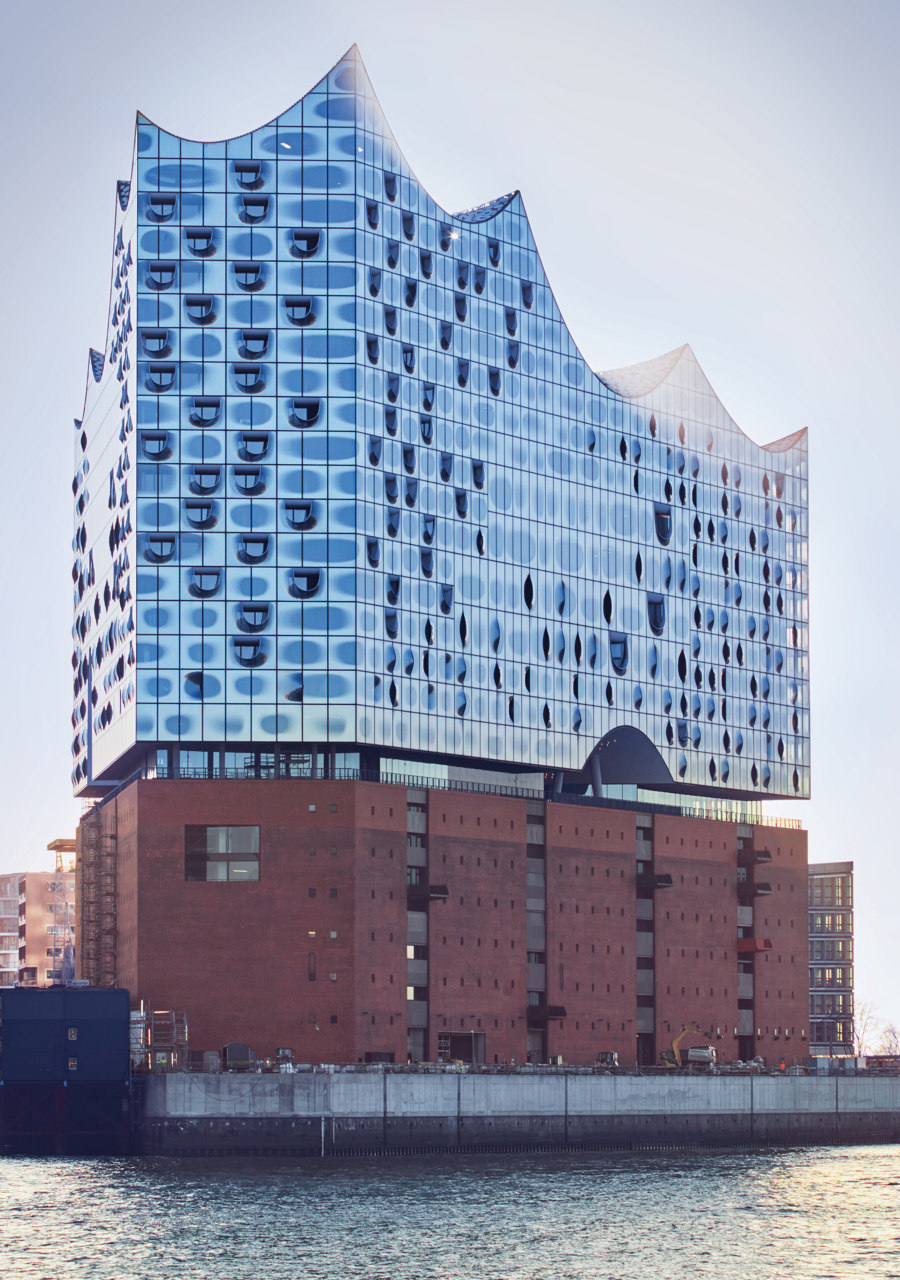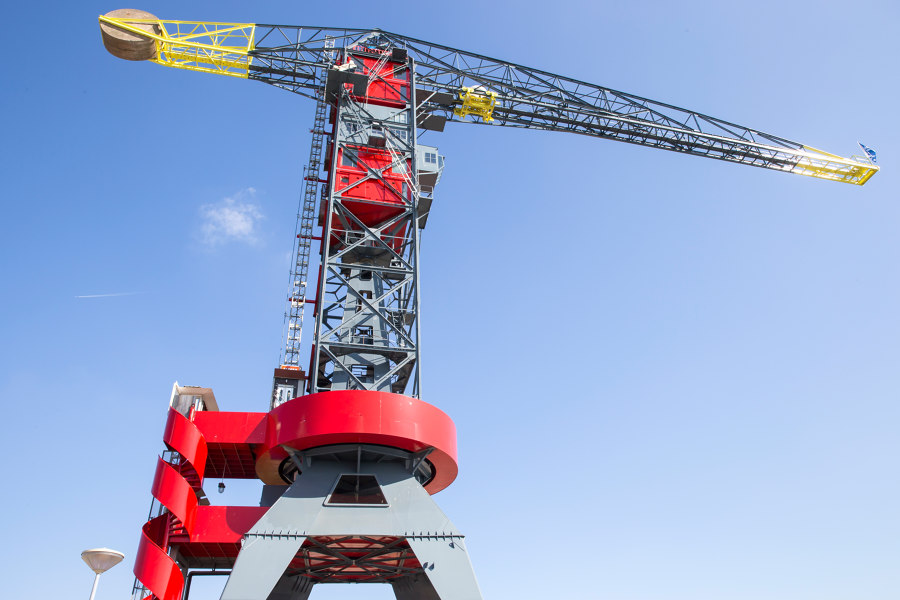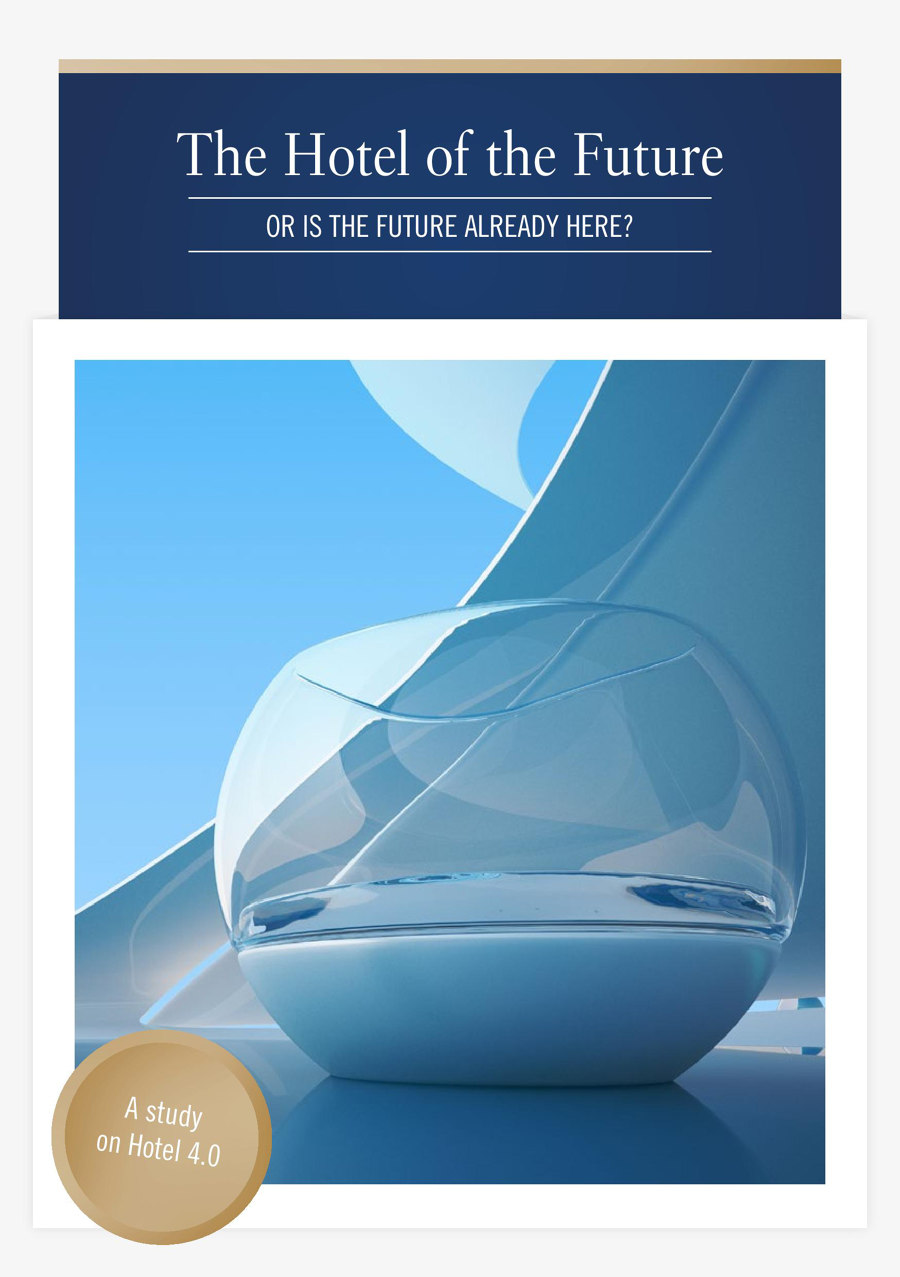Checking in: The Hotel of the Future
Brand story by Gerrit Terstiege
Mettlach, Allemagne
04.04.19
VILLEROY & BOCH recently published a comprehensive analysis of the hotel sector's latest trends and future developments, providing architects and planners with valuable information.
Illustration of a futuristic green city from the e-book ‘The Hotel of the Future’, conceived and published by Villeroy & Boch. The future hotel must simultaneously serve as a workplace, adventure playground and second home

Illustration of a futuristic green city from the e-book ‘The Hotel of the Future’, conceived and published by Villeroy & Boch. The future hotel must simultaneously serve as a workplace, adventure playground and second home
×Without a doubt, any architect or interior designer involved in planning and equipping hotels today must look far into the future. The industry is in motion. Hotel guests’ expectations are increasing, with new trends calling for new ideas and spatial concepts in response. To afford planners deep insights and probing perspectives, Villeroy & Boch has developed an e-book that can be downloaded from the company website free of charge. With the latest facts and figures on the ‘hotel of the future’ along with lavish photo galleries, the many facets of the subject are examined and illuminated here: information, analyses and inspiration alternate with assessments from leading experts. The result is an eminently readable publication of high relevance and use value for designers.
Spectacular inside and out – and already attracting guests from near and far. The Westin Hamburg Hotel is part of the Elbphilharmonie, Hamburg’s new landmark designed by Basle architectural firm Herzog & de Meuron
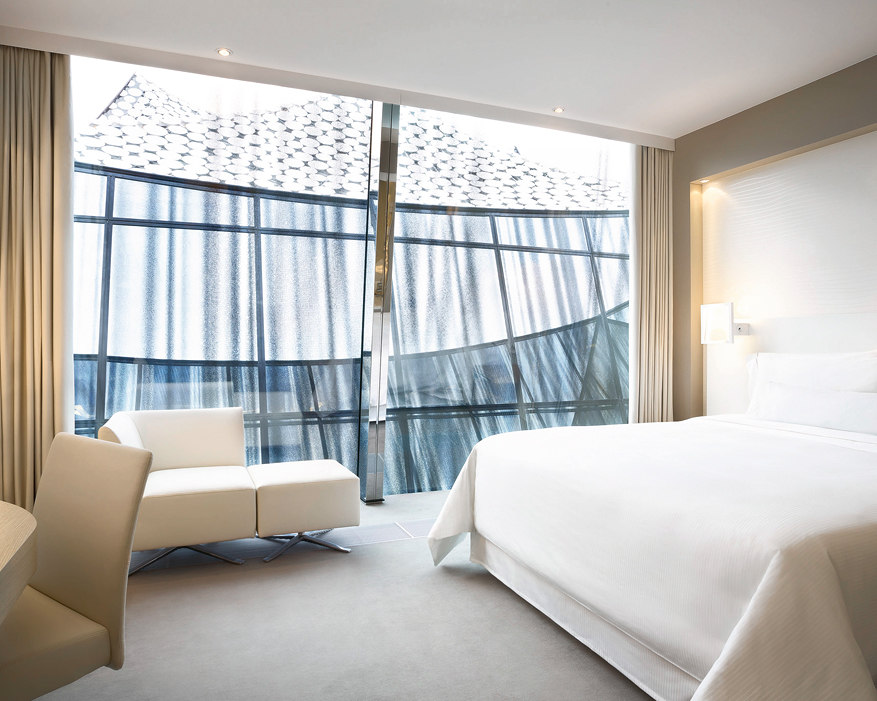
Spectacular inside and out – and already attracting guests from near and far. The Westin Hamburg Hotel is part of the Elbphilharmonie, Hamburg’s new landmark designed by Basle architectural firm Herzog & de Meuron
×Take Dr Alexander Rieck. He works at the Fraunhofer Institute for Industrial Engineering in Stuttgart, where he heads, among other things, the joint project ‘Future Hotel’. Rieck is an architect himself, and a partner in the international architectural firm LAVA, and so is at home with both the theoretical and the practical sides of this topic. Asked about the future demands on bathrooms, especially in hotels, he sees a number of critical factors. ‘The bathroom of the future is adaptive,’ he says. ‘It will need to adjust to various requirements and users. Essentially, it will have to fulfil three different functions, with its appearance, atmosphere and effect changing depending on the situation and user.’ To achieve these aims, the hotel bathroom must develop into a kind of ‘intelligent home away from home,’ Rieck elaborates. ‘The bathroom is a cell of personal wellness, optimally supporting health and well-being with the help of person recognition, sensors and other technology.’
Bathroom planning will be concretely concerned with, for example, making the height of wash basins and mirrors adaptable to individual needs – in accordance with a universal design that accommodates as many user groups as possible. In the future, therefore, designers will increasingly enlist intelligent technology to make the bathroom experience as comfortable as possible for hotel guests. Different aesthetic preferences will also have to be taken into account; the light ambience, for instance, will be controllable and include a range of colours. But technology can also assist hotel guests in using water economically, such as at Hotel Schani in Vienna, which caters to young target groups, where excessive water consumption in the bathrooms causes a light to switch from green to red. People who place importance on conserving resources at home will equally value hotel bathrooms that integrate energy efficiency, recycling and systematic sustainability by means of long-lasting, high-quality fittings and spatial design.
Amsterdam’s NDSM Crane Hotel Faralda by the Heem studio in Haarlem is housed in a decommissioned industrial crane. Some fifty metres in the air, the spa pool from Villeroy & Boch’s SportX line offers a bathing experience with a view
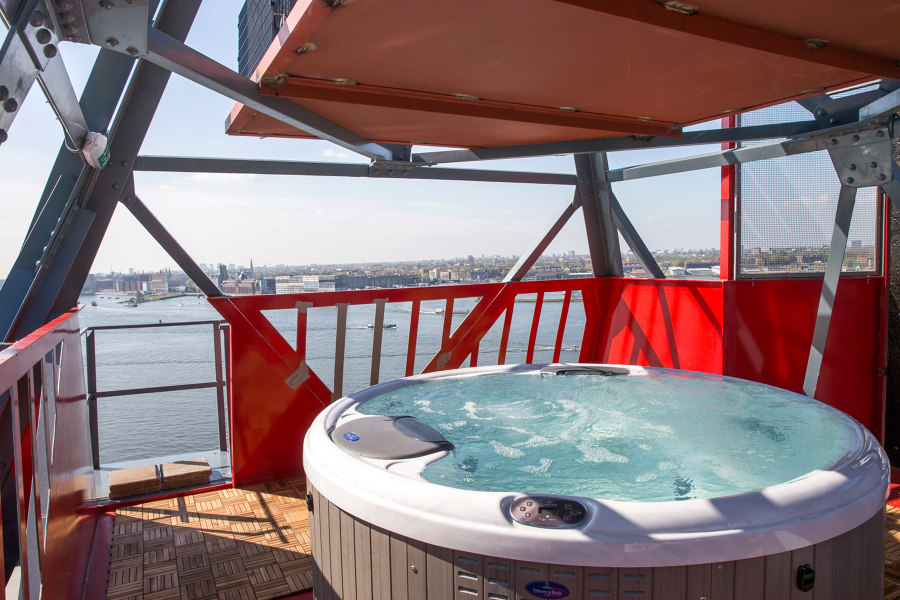
Amsterdam’s NDSM Crane Hotel Faralda by the Heem studio in Haarlem is housed in a decommissioned industrial crane. Some fifty metres in the air, the spa pool from Villeroy & Boch’s SportX line offers a bathing experience with a view
×The 80-page e-book goes well beyond examining clever detail solutions, however. Indeed, it grapples with the megatrends of globalisation, urbanisation and individualisation that are currently influencing the design and furnishing of hotels. In its analysis, the Villeroy & Boch team engaged the services of the experienced, London-born trend researcher Oona Horx-Strathern. She doesn’t view the wish for individual and adaptive architectural solutions as an ‘ego trip’. Quite the contrary, she says: ‘Along with the need for more specific services tailored to the individual – away from the mass market – individualisation creates a new desire for “us”. This can be seen in the variety of experiments in cooperative living, from co-living, co-gardening and co-working to the sharing economy. A new, self-organised sociality is taking shape in which individuals freely enter into arrangements with one another.’
In the e-book ‘The Hotel of the Future’, Villeroy & Boch explores trends in temporary accommodations, giving special attention to bathroom design. In its 80 pages, inspiration is evenly balanced with information for architects and planners
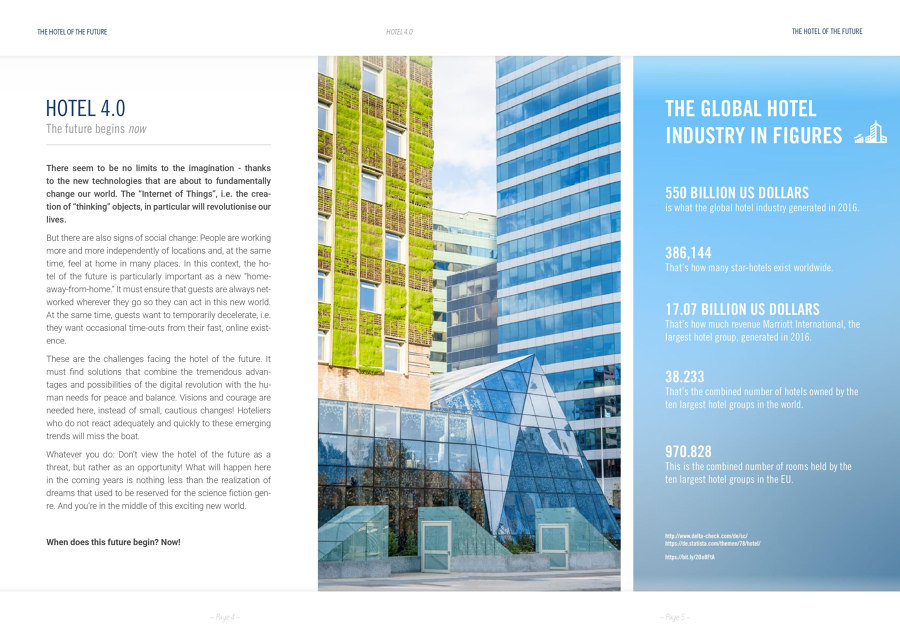
In the e-book ‘The Hotel of the Future’, Villeroy & Boch explores trends in temporary accommodations, giving special attention to bathroom design. In its 80 pages, inspiration is evenly balanced with information for architects and planners
×In terms of design and conception, the hotel bathroom of the future will be far removed from the futuristic visions of many science fiction films. According to the study, what will occupy the foreground visually isn’t technology, but nature. Whereas technical aspects will be kept in the background, discreetly integrated and concealed, the visual and spatial qualities will be determined by materials such as natural stone, wood and plants, which will create an experience more akin to bathing in a forest lake than to cleansing one’s body in a spaceship.
© Architonic


